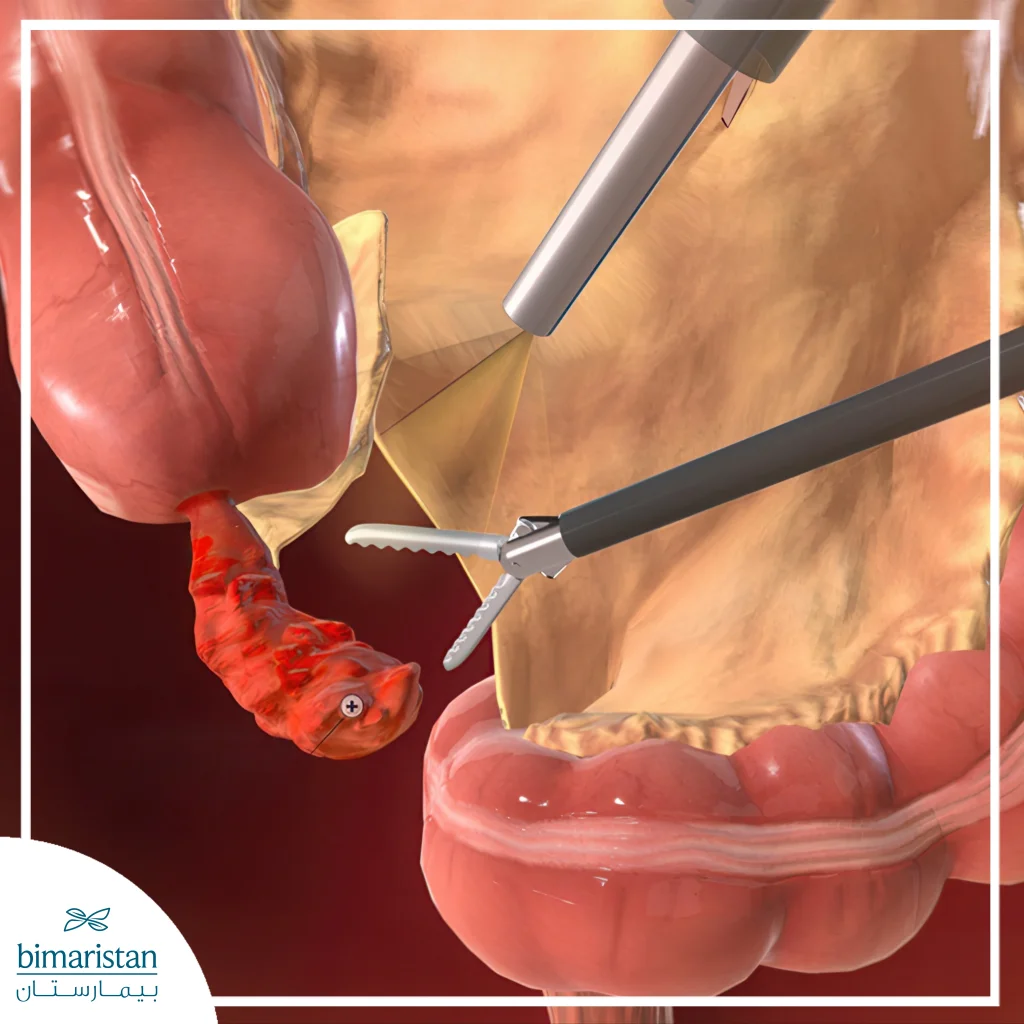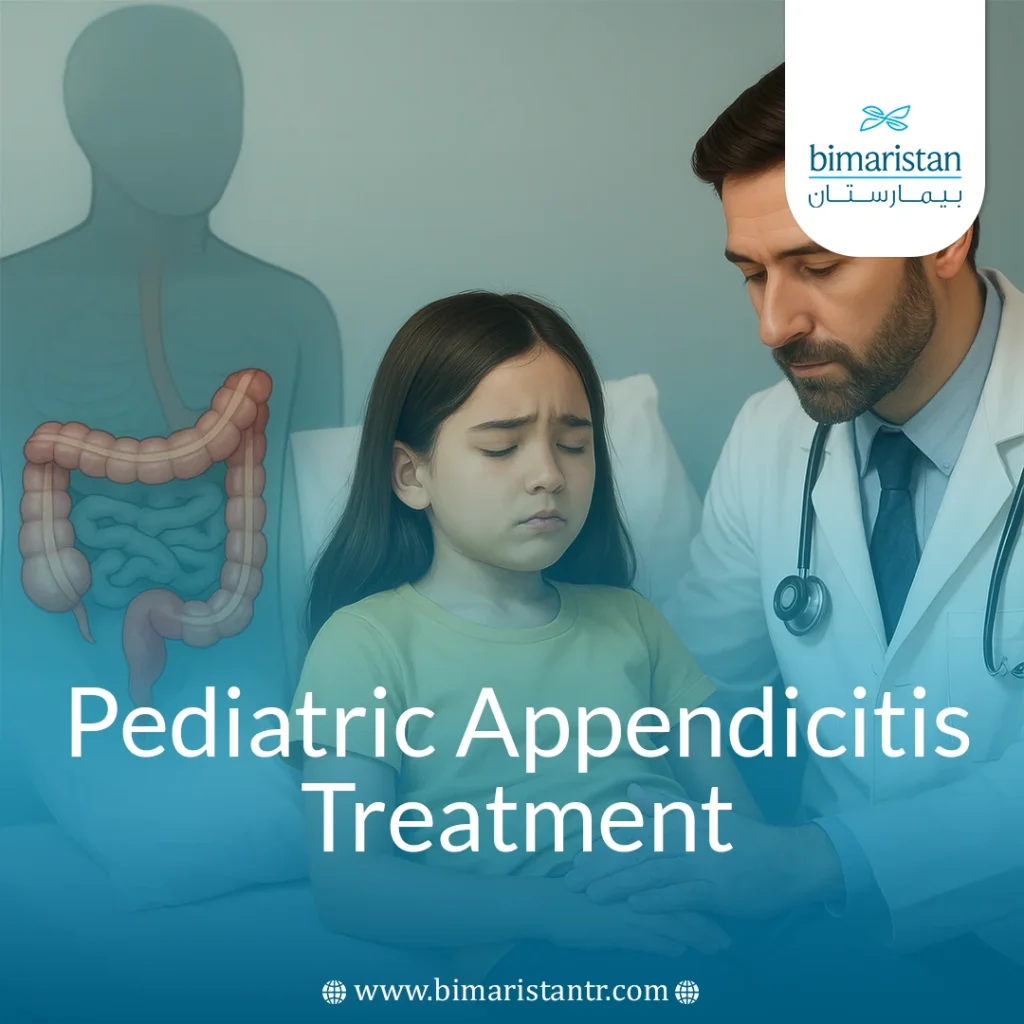Pediatric appendicitis treatment addresses one of the most common childhood medical emergencies, with approximately 70,000 cases reported annually in the United States alone. Most commonly affecting children between the ages of 10 and 18, it is the leading cause of emergency abdominal surgery in this group, so early diagnosis is critical to avoid complications, such as a burst appendix. With advances in surgical techniques, pediatric appendicitis treatment has become safer and more effective.
What is pediatric appendicitis?
The appendix is a small tube-like organ located in the lower right part of the abdomen that connects to the large intestine. Although its function is not entirely clear, its inflammation is one of the most common causes of acute abdominal pain in children. Children are disproportionately affected because inflammation is particularly common between the ages of 10 and 18, when immune and anatomical responses are most susceptible to appendix blockage and irritation.
Inflammation typically begins when the appendix becomes blocked, resulting in a buildup of bacteria and subsequent infection. In mild cases, it may be a localized infection, but if not diagnosed and treated quickly, the appendix may rupture and burst, causing the infection to spread to the abdomen and form abscesses or peritonitis, a life-threatening emergency.
Symptoms of appendicitis in children
Abdominal pain is one of the most prominent symptoms of appendicitis in children, often starting around the navel and then moving to the lower abdomen on the right side. The pain increases with movement, coughing, or jumping, and the child may have difficulty walking or standing. The symptoms are often accompanied by loss of appetite, nausea or vomiting, fever, and mild diarrhea or flatulence. It is important to observe the sequence of symptoms, as their gradual progression with pain and fever makes appendicitis more likely, unlike viral infections that often begin with vomiting.
How is appendicitis diagnosed?
Diagnosing appendicitis in children can be difficult, as the symptoms may mimic other illnesses such as viral gastritis or urinary tract infections. The doctor usually starts by taking the child’s complete medical history, then begins with a clinical examination of the abdomen to check for pain or stiffness, after which blood and urine tests are performed to detect signs of infection or dehydration, and in most cases an ultrasound is ordered to evaluate the appendix without exposing the child to radiation, and if the results are unclear, CT or MRI scans may be used.
Pediatric appendicitis treatment options and approaches
Pediatric appendicitis treatment depends on the severity of the condition, which can include medical treatment with antibiotics or surgical intervention to remove the appendix.
Antibiotic therapy
Pediatric appendicitis treatment with antibiotic therapy is used in mild cases that do not require immediate surgery. The child begins receiving intravenous antibiotics in the hospital and then continues treatment with oral tablets at home for several days. This approach aims to reduce inflammation and control the infection without the need for immediate surgery. However, the inflammation may return in some cases, requiring appendectomy later. Sometimes, appendicitis causes the formation of a mass or abscess inside the abdomen due to the attachment of parts of the intestine to the inflamed appendix. When this happens, the child is first given antibiotics to control the infection, and then surgery is performed after several weeks if symptoms persist.
Pediatric appendectomy surgery
Pediatric appendicitis treatment is the most common and effective way to treat appendicitis in children, and it is done in two ways:
- Laparoscopic surgery: It is performed through several small incisions in the lower right abdomen, through which the surgeon inserts a camera and precision instruments to remove the appendix. The procedure usually takes about an hour and is characterized by a faster recovery time and fewer complications.
- Open surgery: It is used in complex cases or where laparoscopic surgery is not possible, and requires a larger incision in the right lower abdomen. The operation takes longer than laparoscopic surgery, depending on the complexity of the case, and may exceed an hour. The recovery period in this method is longer compared to laparoscopic surgery.

What happens if appendicitis is left untreated?
If left untreated, appendicitis can lead to the appendix bursting and the infection spreading into the abdominal cavity, creating a life-threatening medical emergency for the child. A rupture can cause the formation of an intra-abdominal abscess, a purulent collection that needs immediate treatment to prevent other complications, and can lead to peritonitis, an inflammation of the membrane lining the abdomen, which is considered an emergency that requires urgent medical intervention to prevent the infection from spreading to the rest of the body. Early diagnosis and treatment are essential to avoid these serious risks.
Care after appendicitis treatment
Most children recover quickly after appendectomy, especially if the surgery is performed laparoscopically, which speeds up pediatric appendicitis treatment, as they can go home the same day or the next day. The child is given painkillers and antibiotics depending on their condition and is allowed to eat gradually if there are no complications. It is recommended to rest for a few days after laparoscopy (3–5 days), or longer after open surgery (10–14 days), and it is important to monitor and care for the wound and avoid strenuous activities until the doctor allows a return to them.
In conclusion, pediatric appendicitis treatment is an emergency that requires rapid intervention to avoid serious complications such as appendiceal rupture or peritonitis. Pediatric appendectomy remains the safest and most effective treatment option in most cases. Adherence to post-treatment instructions and monitoring the child’s condition will ensure a quick and safe recovery.
Sources:
- Alder, A. C., & Cuffari, C. (2024, January 22). Pediatric appendicitis. In eMedicine from Medscape.
- Cambridge University Hospitals. (2025, April 29). Appendicitis in children – information for parents and carers. CUH Patient Information.

